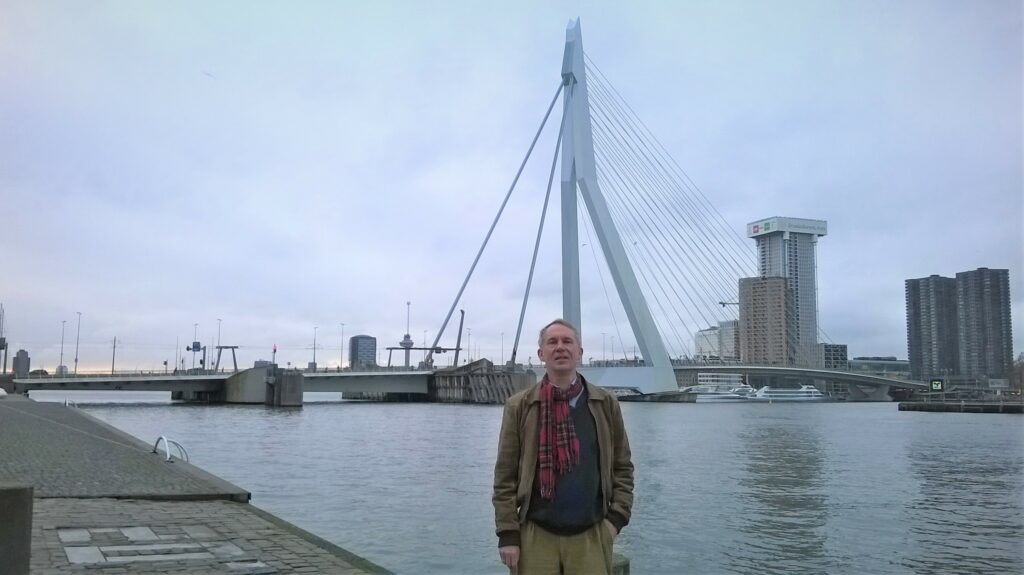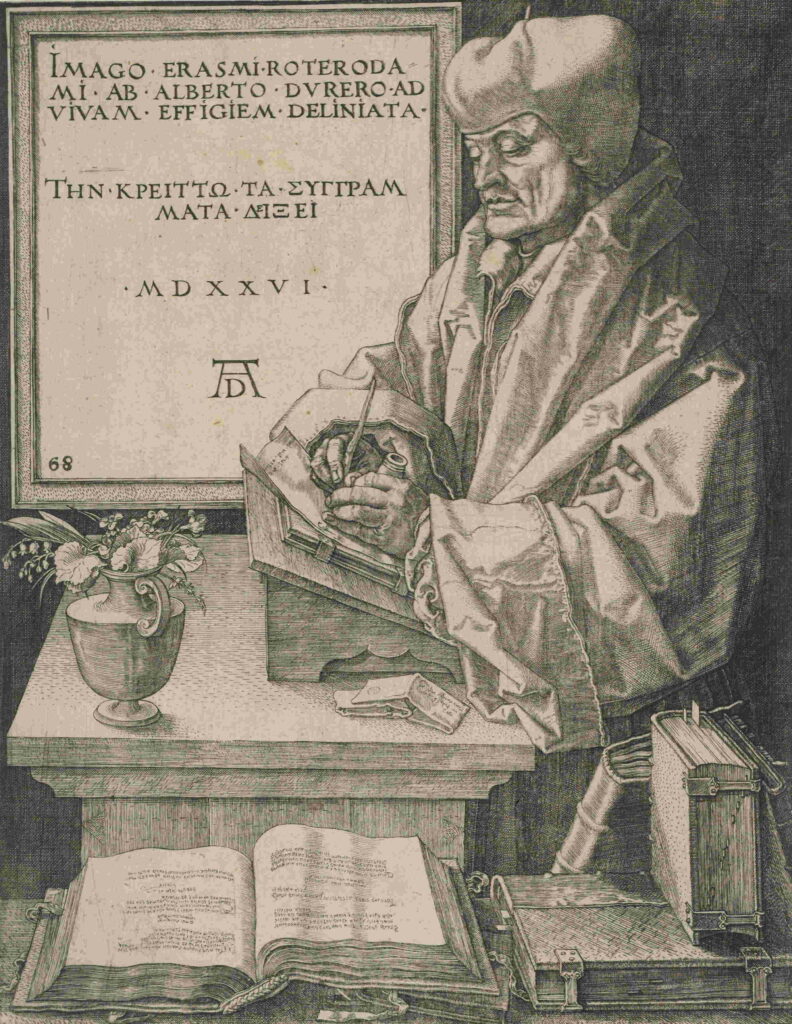Five centuries ago Erasmus traveled through Europe on a horseback, first as a teacher for young people, later he developed into the moral compass of the higher educated European elite: he stood for peace and reason, not only in word but especially in deed. In doing so, he set a direction that would make the world fairer and people happier.
Quite right, then, that dozens of schools, colleges and universities in places he visited are proud to name themselves or an institution after him, in the Netherlands and abroad, from Rotterdam to Rome, from Mainz to Madrid (where Erasmus was never around). Now, in the 21st century, more young people than ever are receiving higher education, and though today’s ethical questions are different from those of Erasmus’ time, a moral teacher and compass is still valuable. What do contemporary students get from Erasmus about him and his ideals?

To find out, I get on my steed and cycle after Erasmus across Europe in search of Erasmi alumni, pupils or students of high schools, universities or colleges that are (partly) named after him. There I will see which of Erasmus’ ideas can be seen there and hope to hear what young people today learn about him.

I start in Rotterdam, but also get to Brussels, Paris, Basel, Cambridge, Turin and Mainz, for example, and eventually even to cities and countries he has never been near such as Madrid and Vienna:
Erasmus XXI

Erasmi alumnus
In 1526, Albrecht Dürer made an etching with the image of Erasmus: Imago Erasmi Roterodami ab Alberto Durero ad vivam effigiem deliniata. He further wrote with it: ΤΗΝ . ΚΡΕΙΤΤΩ . ΤΑ . ΣΥΝΓΡΑΜΜΑΤΑ . ΔΕΙΞΕΙ (his writings show his better image). The motto of my tour may thus be: ΤΗΝ . ἈΡΙΣΤΗΝ . ὉΙ . ΜΑΘΗΤΑΙ . ΔΕΙΞΟΥΣΙΝ (his pupils show his best image).
College students at the Gymnasium Erasmianum have their own song with Latin and Greek lyrics, in which they are called Erasmi alumni, Ἐρασμοῦ μαθηταί.
Curious about what Erasmus’ ideas might mean in this century’s Europe? Then follow me on my bicycle tour via the site or sign up for my newsletter below (in Dutch)
